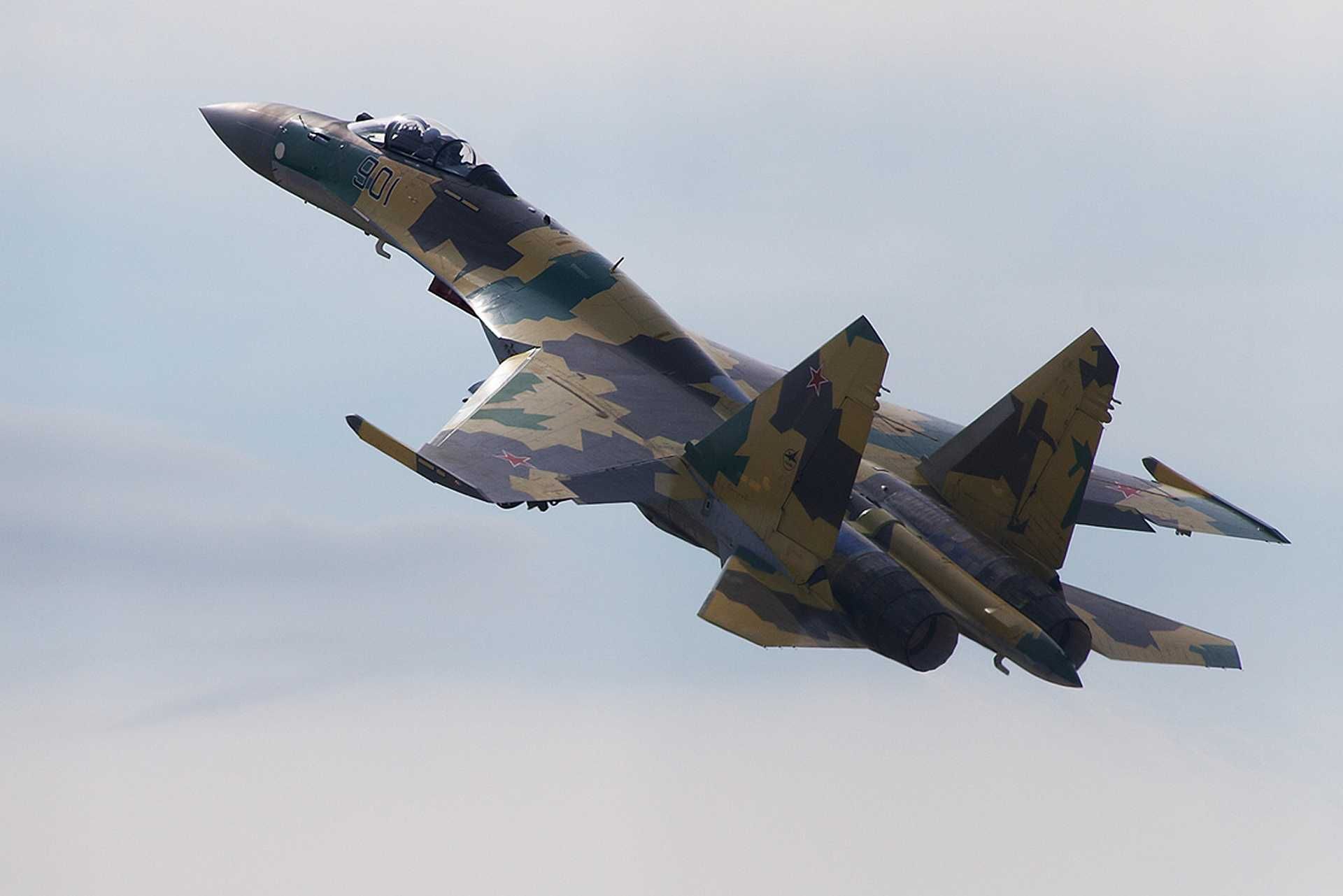Breaking News
Iran’s F-14 Tomcat era ends with the arrival of new Russian Su-35SE fighters.
According to Flugrevue on November 29, 2024, Iran received its first two Sukhoi Su-35SE fighter jets from Russia as part of a deal to replace aging US-made F-14 Tomcat jets. These jets were officially handed over to the Islamic Republic of Iran Air Force (IRIAF) on November 18, 2024, during a private ceremony at the Komsomolsk-on-Amur Aircraft Plant (KnAAPO). The two aircraft were transported disassembled on an Antonov An-124-100 cargo plane to Mehrabad Airport in Tehran. After arrival, they were moved to the 3rd Tactical Air Force Base near Hamadan for assembly.
Follow Army Recognition on Google News at this link

Iran has also undertaken efforts to modernize its F-14 Tomcat fleet, originally acquired in the 1970s, to extend their operational capability until at least 2030. (Picture source: Airliners.net/Shahram Sharifi)
Initially, the order was for 25 Su-35SE aircraft to replace the Islamic Republic of Iran Air Force (IRIAF)’s US-made Grumman F-14A Tomcats stationed in Isfahan, but it was later expanded to 50 units to also replace F-4E Phantom II aircraft based in Hamadan. The negotiations for advanced Russian fighter jets date back to 2007 when Iran explored acquiring Su-30MKs. However, United Nations sanctions and Russian hesitations over Tehran’s nuclear program halted the potential deal. Renewed discussions in 2015 for Su-30SM jets, including a request for domestic production rights, were similarly unsuccessful.
The eventual agreement for the Su-35SE was enabled by a combination of factors, including Russia’s need for Iranian drones like the Shahed-131 and Shahed-136 during the conflict in Ukraine. Following the lifting of UN restrictions on ballistic missile transfers in October 2023, Iran and Russia finalized the Su-35SE deal, which reportedly also included discussions about Iranian ballistic missiles and Russian Mi-28NME attack helicopters.
The Su-35SE is a multirole fighter jet equipped with an Active Electronically Scanned Array (AESA) radar and capable of operating at a maximum speed of Mach 2.25 with an operational range of 3,600 kilometers. It can carry a variety of air-to-air and air-to-ground munitions, including R-37M long-range missiles. These capabilities make it suitable for replacing the IRIAF’s aging fleet of F-14A Tomcats, F-4E Phantom II, MiG-29, and Su-24MK aircraft. The aircraft will be deployed to the 81st Tactical Fighter Squadron in Isfahan and the 31st Tactical Fighter Squadron in Hamadan. To accommodate these new aircraft, the IRIAF has constructed and is expanding reinforced hangars at the Hamadan base.
In preparation for the Su-35SE, the IRIAF has been training pilots on Yak-130 advanced trainers, which were delivered in 2022. The first batch of Su-35SE pilot trainers is expected to graduate in December 2024, with further training conducted domestically using simulators and Yak-130 aircraft. The gradual integration of the Su-35SE into the IRIAF will coincide with the decommissioning of the last operational F-14A Tomcats, which have been plagued by spare part shortages and reduced availability.

The IRIAF plans to have 25 operational Su-35SE jets by the end of 2025, with deliveries continuing through the late 2020s to complete the 50-unit order. (Picture source: Russian social media)
Reports from October 2024 indicate that Iran has secured a license to domestically produce Su-30 and Su-35 aircraft under an agreement likely reached during the BRICS summit in Kazan, Russia. The production target is 48 to 72 Su-35 jets, while the number of Su-30 units remains unspecified. These developments align with Iran’s efforts to modernize its fleet and establish a more self-reliant defense industry.
The IRIAF plans to have 25 operational Su-35SE jets by the end of 2025, with deliveries continuing through the late 2020s to complete the 50-unit order. In addition, Iran continues to operate a diverse fleet of aircraft, including U.S.-made F-14 and F-4 jets, Russian MiG-29 and Su-24 aircraft, and domestically produced platforms such as the HESA Saeqeh and Kowsar. While the Su-35SE will enhance Iran’s air capabilities, older aircraft like the F-4E and F-5E/F are expected to remain in service for secondary missions.
The Su-35SE is a 4.5-generation multirole fighter featuring thrust-vectoring engines, the Irbis-E radar capable of tracking multiple targets at extended ranges, and advanced avionics. In contrast, Iran's F-14AMs are upgraded versions of the 1970s-era F-14A Tomcats, incorporating domestic avionics and compatibility with various missiles, including the R-73E and AIM-54A. While these upgrades have extended the operational life of the F-14AMs, they do not match the technological advancements of the Su-35SE. Therefore, the integration of the Su-35SE is expected to substantially enhance Iran's air combat proficiency and overall military effectiveness.
Iran has also undertaken efforts to modernize its F-14 Tomcat fleet, originally acquired in the 1970s, to extend their operational capability until at least 2030. This program includes upgrades to avionics, radar systems, and weaponry, allowing the aircraft to carry various air-to-air missiles, such as the domestically produced Fakour-90, derived from the AIM-54 Phoenix. Modifications also enable precision strike roles, supporting ordnance payloads of up to 3,000 kg. Despite challenges posed by international sanctions and the aging of original components, Iran has maintained around 10 operational F-14s through domestic engineering and reverse-engineering methods.
Russia and Iran have increased their military cooperation, transitioning from a supplier-client relationship to a more reciprocal partnership. Their collaboration includes joint military operations, such as their support for President Bashar al-Assad in the Syrian civil war, along with intelligence sharing and coordinated strategies. Iran has provided drones and ballistic missiles to Russia, reportedly used in the Ukraine conflict. The two countries are negotiating a new bilateral defense agreement, with plans for Iranian President Masoud Pezeshkian to visit Russia to finalize it, although the date remains undetermined. Both nations appear to align strategically against Western influence while seeking to enhance their military capabilities.


























